To ensure your goats are healthy and happy you need to provide them with free-choice trace minerals. Minerals are especially important for growing kids, lactating or pregnant does, and bucks during breeding season. Here are six different options for giving your goats the minerals they need.
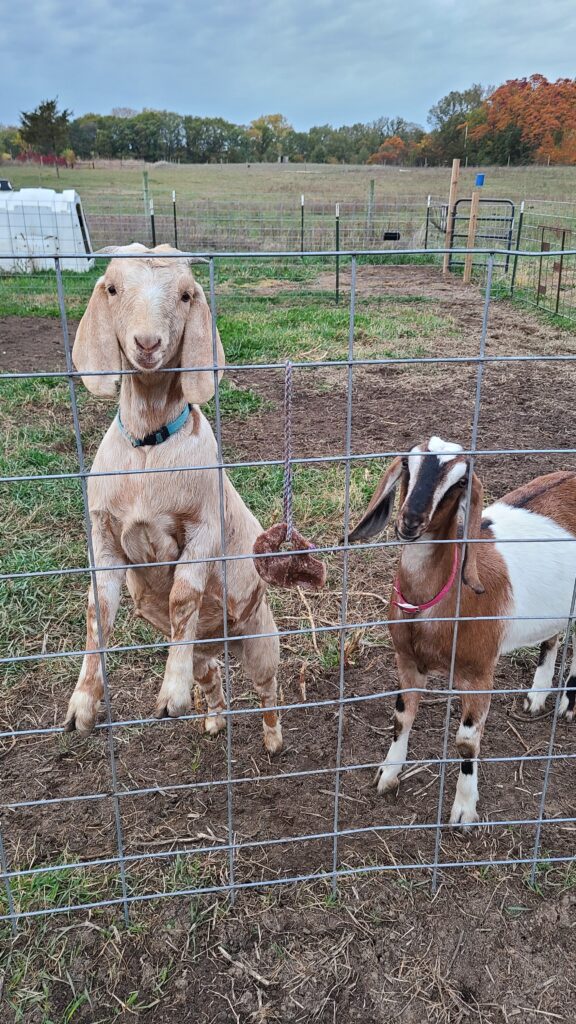
This post contains affiliate links. As an Amazon Associate, I earn from qualifying purchases.
To ensure your goats are healthy and happy you need to provide them with free-choice trace minerals. Minerals are especially important for growing kids, lactating or pregnant does, and bucks during breeding season.
There are many options for providing minerals to your goats. You can provide the minerals in a solid, block form or powdered, loose mineral form.
Mineral Blocks Versus Loose Mineral
Each has their own benefits and disadvantages. While mineral blocks are convenient and stand up better to the elements, the distinct advantage of loose mineral is that it is more concentrated so deficiencies can be corrected faster. When combined with salt in the block form, the salt content has a big impact on the animal’s intake.
Animals, like goats, have an instinctual drive to maintain their health through consuming foods than contain necessary vitamins and minerals. In the wild, a goat would forage on a variety of grasses and trees to obtain adequate mineral intake. Similarly, our domestic goat friends know to go lick their block or lap up some loose mineral when they need it. I think that is pretty cool!
If you don’t provide the minerals your goats need, you may see them eating dirt, which may provide some salt and minerals. If goats go without proper nutrition for too long, they can develop systemic diseases. White muscle disease, foot rot, hair loss, and miscarriage are among the diseases linked to vitamin or mineral deficiency.
Providing minerals is easy enough and part of being a responsible pet owner or livestock producer. So, let’s look at some options and see if you can find which will work for your situation!
Block Mineral Options
1. Salt and Mineral on a Rope
Products like Rock on a Rope (see the image at the top of this post) are super convenient because you can attach them anywhere. I use these when my goats are out on a brush removal job, I just tie it in a sturdy tree. I also use them in my grow pens for kids, it gives them something to play with and do during the day. Another bonus is that they are unrefined and don’t contain dyes or other unnecessary chemicals.
The down side of these is that they erode over time if left in the rain or snow and eventually fall off the rope and become contaminated on the ground. Another disadvantage is that, compared to premium loose mineral formulations, they contain much lower levels of needed minerals like copper and selenium.
2. Wall-mounted Small Blocks
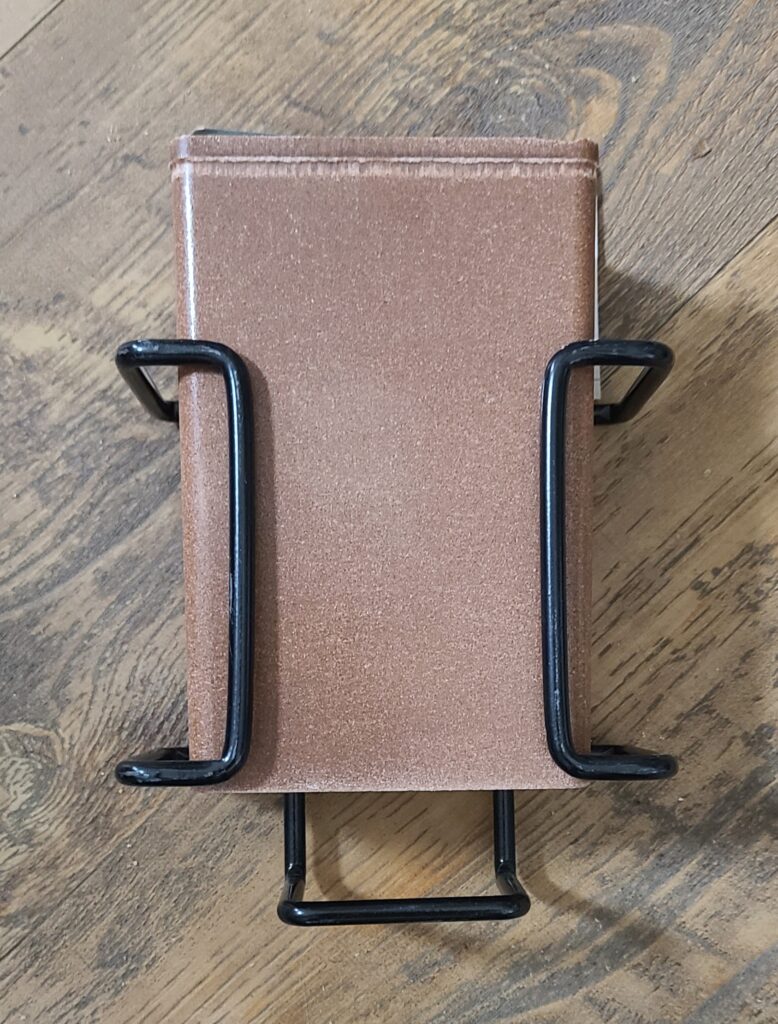
A vinyl covered wire holder and 4-pound salt/mineral combination block may work for your herd. I have tried these with some success. I’ve found my goats really like the “treat blocks,” but they do contain artificial flavoring and only low mineral content.
Issues I’ve encountered using this set-up include that my horned goats have both knocked the block out of the holder (getting it dirty) and ripped the holder off the wall. Further, when the block gets too small, the holder becomes useless. The block is also pretty hard, some of my goats would rather bite it, scraping with their teeth than lick it.
3. Floor-Supported Large Blocks
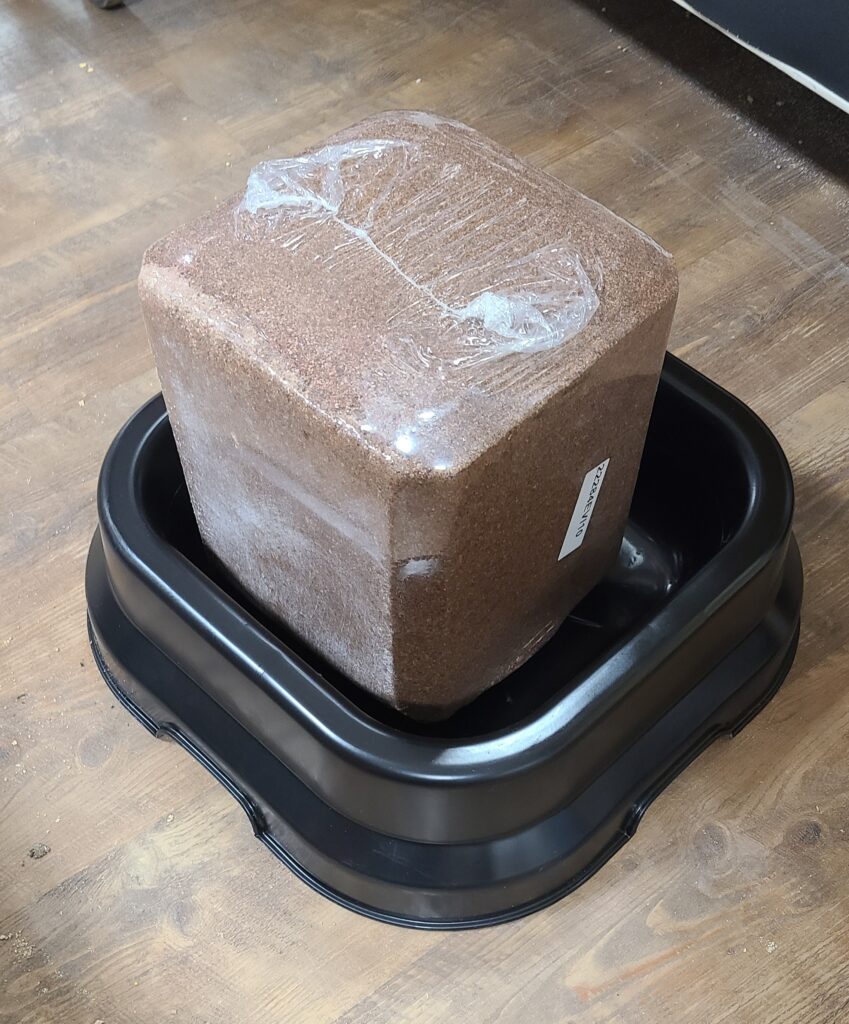
A plastic pan made for holding up to a 50-pound salt or mineral block is another option. I have used these for goats that are pastured with horses. What I like about these is that they last a long time due to of the sheer size of the block. If you have a lot of animals or a combination of large and small animals living together, this may be a more cost-effective choice.
Other benefits include that the pan is designed so that the block may be kept outside. There are drainage holes and plastic ridges that keep the block from sitting on the bottom of the pan. Also, the pan can still contain the block as it gets smaller from use or erosion.
One of the problems I have encountered with this is that my goats have knocked the block out the pan, into the dirt (a common problem for me, as you can see!). They also scratch their teeth on it instead of licking it, and it contains lower levels of essential minerals than can be obtained through a loose mineral feeding option.
Loose Mineral Options
4. Side-by-side Wall-mounted Loose Mineral Feeder
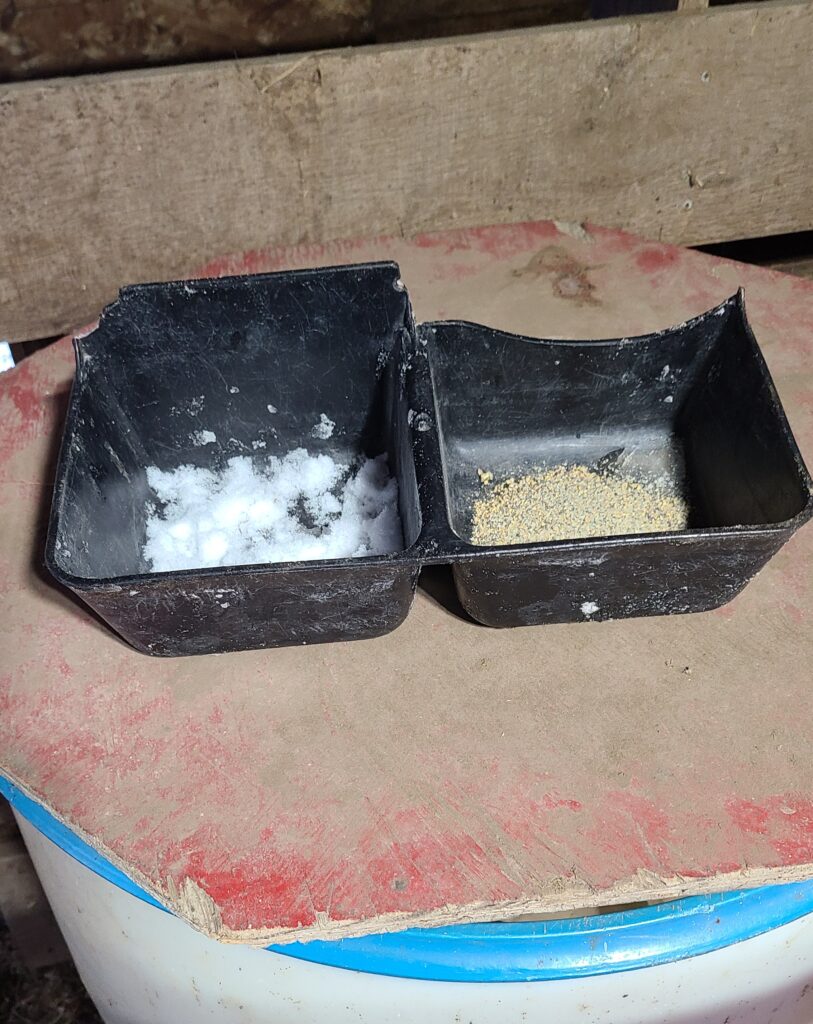
I purchased a stack of these 3.5-quart mineral feeders a few years ago with high hopes. They are inexpensive, have an awesome two-compartment design, and can easily be mounted to a wall or fence with screws. If my goats weren’t so hard on everything, they would be my top recommendation for providing minerals!
Providing salt and trace minerals separately to goats is the best way to ensure that they get what they are lacking. When salt is combined with minerals the goat isn’t able to choose how to self-medicate. When I started separating the two, I noticed some goats going for one while others were going for the other.
Plus, loose minerals are easier to consume, the animal can just lap them up with little to no effort, and in the powdered form, are readily absorbed without having to be broken down further. Not only that, but loose mineral concentrations are generally higher compared to block formulations.
The only drawback with this option is that my goats ripped these off the walls rather quickly, you can see the broken plastic in the picture above. If your goats aren’t as rough and rowdy as mine, these may work for you! Another thing to mention is that loose minerals need to be kept inside, once exposed to moisture they become caked and if diluted with rain or snow become unusable by the animals.
5. Wall-mounted Barrel Mineral Feeder
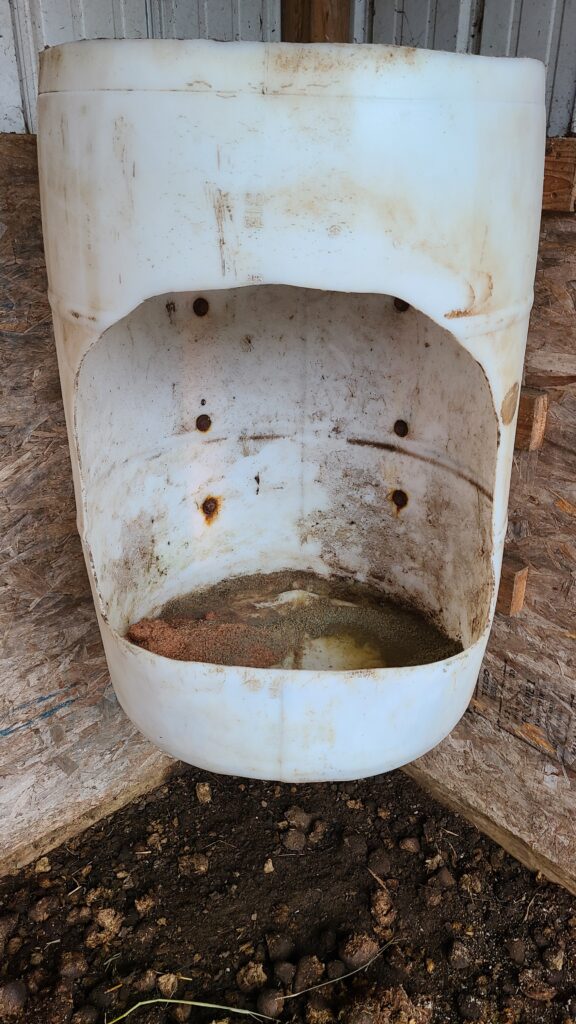
We made this mineral feeder out of a 55-gallon drum. My husband cut a hole in it with a reciprocating saw (Sawzall) and then screwed it to the wall in one of our run-ins. This feeder supplied minerals to goats, beef cattle, and horses that were pastured together for the summer. I tried to make two piles on the bottom of the feeder, one for salt and one for loose mineral, but they ended up getting mixed together, especially in the middle. It’s not the prettiest, but it did work and stood up to even large animals rubbing on it.
One downside to using this type of feeder is that it is bulky and takes up a lot of space. Another is that you don’t have the neat, discrete compartments to keep your supplements separate from one another.
6. Individual Wall-mounted PVC Mineral Feeders
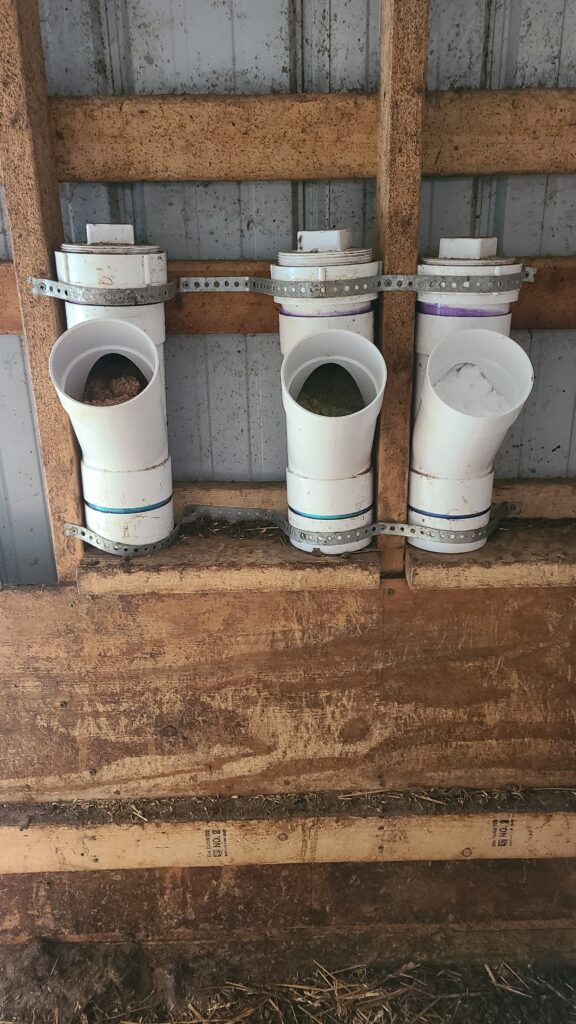
These homemade mineral feeders are the winner in my book! They are made from 4-inch PVC pipe and are partially filled with concrete on the inside to provide an incline for gravity feeding. They are fastened to the wall with metal pipe hanger straps and screws.
These are great because they will last forever and are virtually indestructible. The opening is just the right size for the goat’s nose which helps keep the minerals clean. I had my husband make me three of them so that I could keep salt, loose mineral, and baking soda separate and constantly available for my does in milk.
The main drawback of this option is the upfront cost of the materials. The first one that my husband made cost a little over $80 to build. The cost of the ones built after that was less because some of the materials could be used for multiple projects such as the 2-foot section of pipe, PVC cement, concrete, and pipe strap. For detailed directions on building these mineral feeders read the how-to article here.
While assembly is simple, another drawback is the time necessary to put these feeders together. Also, the small opening keeps them from being used by other livestock with larger snouts (horses or cattle)- which isn’t ideal if you practice multispecies grazing.
Hopefully this gives you some insight or ideas on how to provide minerals, in some form, to your goats! My preferred loose mineral is Sweetlix Meat Maker and you can buy it online or through a feed mill.

Mother, farmer, author, and teacher by trade… She loves tending to things and watching them grow!
